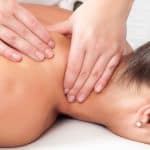One of the most commonly reported and diagnosed pain conditions – carpal tunnel syndrome (CTS) – drives many people to seek relief. As known givers of such relief, massage therapists are highly likely to work with clients suffering from CTS. Practitioners aiming to play a key role in their clients’ CTS recovery are best equipped when they have a well-rounded treatment plan in place. In addition to a focused, therapeutic massage, such a plan for resolving carpal tunnel syndrome typically involves providing positive encouragement and offering good advice.
Carpal tunnel syndrome occurs when the median nerve in the forearm is compressed in the carpal tunnel. The carpal tunnel is at the base of the anterior wrist between the carpal bones where nine flexor tendons and the median nerve must pass through. If any tenosynovial proliferation, joint abnormality, tumor or muscular anomaly exists in this location, the median nerve can be compressed or entrapped inside this tunnel. Symptoms of carpal tunnel syndrome typically include pain, tingling, burning and numbness of the affected hand.
Having several massage techniques that address restriction in the carpal tunnel will benefit people with CTS. However, capitalizing on various additional angles of the healing process will amplify a therapist’s success at relieving pressure on their clients’ median nerve.
Positive Encouragement
Too often, clients come into a practice complaining of pain that has been plaguing them for a while – and their hope of finding relief has already waned. This is common with CTS, as repetitive wrist motions can aggravate median nerve compression. Unfortunately, this aggravation possesses the potential to spawn a seemingly endless cycle of pain. Thus, suffering with carpal tunnel syndrome can leave many people feeling hopeless about their condition. Especially for those who can’t seem to find light at the end of the tunnel (no pun intended), a massage therapist’s optimistic attitude can be key to his or her client’s recovery.
Although the correlation between positive thinking and healing may seem obvious to those in the natural health professions, many forget about their powerful association. As reported in a 2001 edition of the Canadian Medical Association’s Journal, Donald Cole of the Institute for Work and Health in Toronto and colleagues documented this correlation. According to Cole, across a wide range of clinical conditions, from lower back pain to heart surgery, patients who felt they would do well in recovery did. In addition, the researchers observed that patients who were scared or pessimistic about their recovery did not recover as quickly or as well as the optimists.
Good Advice
Besides presenting an optimistic view on the recovery of CTS, offering skilled advice for home care is important. Besides staying abreast of new research and devices for helping the carpal tunnel, reinforcing the following suggestions can help many CTS sufferers take control of their pain:
- Rest – Avoiding heavy use of the affected hand or wrist for several weeks gives the inflamed tissue inside the carpal tunnel a chance to heal. This includes periodically changing positions and taking regular breaks at work, especially if a job places stress on the wrists.
- Splinting – Physicians often suggest wearing a splint to guarantee the carpal tunnel some rest. Worn during sleep or during the day, a splint keeps the wrist in a neutral position. Remind clients how useful their splints can be.
- NSAIDS – As long as they are taken as directed and don’t pose safety concerns, pain medications like non-steroidal anti-inflammatory drugs (NSAIDs) ease inflammation, which reduces swelling inside the carpal tunnel. If they don’t understand that NSAIDS create an opportunity to heal by breaking the inflammation cycle, some people assume that taking pain medications is just a way to get temporary relief.
- Carpal Tunnel Exercises – Often learned in physical therapy, regular performance of carpal tunnel exercises designed to stretch the wrists and keep them limber help ease CTS. Even if someone’s prescription for physical therapy has run its course, encourage clients to keep up with their wrist exercises.
- Vitamin B6 – Several studies have suggested that Vitamin B6 deficiencies are associated with carpal tunnel syndrome. Thus, many believe supplementing with Vitamin B6 (25-50 mg, 2 to 3 times a day) helps improve median nerve pain. Doctors are divided on why Vitamin B6 provides CTS relief. Some think that synovium swelling and inelasticity are caused by B6 deficiency, while others believe Vitamin B6 acts as a diuretic, helping the body to eliminate excess fluid.
As one of the most frequently encountered musculo-skeletal injuries, carpal tunnel syndrome is a mainstay in any massage therapy practice. By combining positive encouragement and good advice with competent massage techniques, a well-rounded CTS plan elevates a therapist’s clinical effectiveness against carpal tunnel pain.
Recommended Study:
Chronic Pain Management
Nerve Mobilization
More Information:
Carpal Tunnel Syndrome (CTS): Massagae Benefits and Precautions















